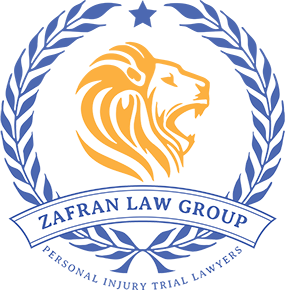Cerebral Palsy is one of the most common birth injuries a child can suffer. In fact, the Center for Disease Control (CDC) estimates that cerebral palsy is the most common childhood motor disability, affecting about 1 in every 345 children. If your child has been diagnosed with cerebral palsy, you may be entitled to compensation under the law. Our Pennsylvania cerebral palsy lawyers are here to help you evaluate your claim and determine your options.
What Are The Three Types Of Cerebral Palsy?
Cerebral palsy generally refers to a variety of disorders that impact a person’s ability to control movements, maintain balance, or maintain posture. Since the term covers a broad spectrum of symptoms, medical experts have divided them into three subcategories.
Is Cerebral Palsy A Permanent Disability?
Cerebral palsy is something that patients deal with for the rest of their lives. However, cerebral palsy does not get worse over time. Additionally, early identification and intervention can help individuals with cerebral palsy learn skills and techniques that can help them manage their symptoms and lead normal lives. Pennsylvania cerebral palsy lawyers at Zafran Law Group can help you find resources and tools to help your child receive the treatment and help they need.
Even though cerebral palsy encompasses a wide range of symptoms, they are all caused by brain damage that occurs either before a child is born or during the child’s birth. There are certain risk factors that increase the likelihood that a child will develop cerebral palsy, which include:
- Premature Births
- Jaundice and Kernicterus
- Infections During Pregnancy
- Birth Complications
- Low Birth Weight
- Multiple Births, such as Twins or Triplets
- A Mother Experiencing Medical Conditions, such as Thyroid Problems
- Pregnancies Resulting From the Use of Some Infertility Treatments
In rarer cases, cerebral palsy can occur due to brain damage that occurs more than 28 days after the child’s birth. These situations are known as acquired cerebral palsy and can occur if the child developed an infection (such as meningitis) or sustained a head injury. If you suspect your child’s cerebral palsy resulted from an injury at birth, contact a Pennsylvania cerebral palsy lawyer today.
How A Pennsylvania Cerebral Palsy Lawyer Can Help You Obtain Compensation
A Pennsylvania cerebral palsy lawyer can help you obtain compensation by:
- Understanding your specific situation: The lawyer will assess the severity of your child’s cerebral palsy and the impact it has on their daily life.
- Identifying potential sources of compensation: This may include medical malpractice, defective products, or exposure to harmful substances.
- Gathering evidence: The lawyer will collect medical records, expert opinions, and other relevant documentation to support your claim.
- Negotiating with insurance companies: The lawyer will advocate for a fair settlement on your behalf.
- Representing you in court: If necessary, the lawyer will litigate your case to obtain the maximum compensation possible.
By hiring Zafran Law Group’s Pennsylvania cerebral palsy lawyers, you can increase your chances of receiving the compensation you deserve to help your child’s future.
Is Cerebral Palsy A Result Of Malpractice?

If the brain injury occurs during the child’s delivery, there is a good chance that there was some sort of medical malpractice involved. Brain damage that occurs during birth can happen when a doctor fails to follow appropriate protocols, does not take the appropriate precautions during the delivery process, or fails to identify a problem or potential diagnosis that a similarly situated doctor would have caught. If that brain damage ultimately leads to the child developing cerebral palsy, then it is the result of medical malpractice. If you suspect that your child’s cerebral palsy was caused by medical malpractice, contact one of our Philadelphia cerebral palsy attorneys immediately.
Is Cerebral Palsy A Birth Injury?
Some cases of cerebral palsy occur during birth, and in those cases, cerebral palsy is considered a birth injury. In these cases, brain damage occurs just as the mother goes into labor, during the delivery, or very shortly after the baby is born. It’s important to remember that many cases of cerebral palsy are not diagnosed until months later, so it can be difficult to determine whether the brain damage was caused while the mother was pregnant, during the child’s birth, or in the days following. If you’re having troubling pinning down the cause of your child’s cerebral palsy, a Pennsylvania cerebral palsy lawyer can help you investigate.
Should I Contact A Lawyer For My Child’s Cerebral Palsy?
At Zafran Law Group, we offer free case evaluations. As a result, there is no reason to hesitate to contact our team to discuss the possibility of a cerebral palsy birth injury lawsuit. Our Philadelphia cerebral palsy attorneys are experienced in reviewing the facts of each case and helping our clients determine whether they are entitled to just compensation. We assess each case with compassion and care.
